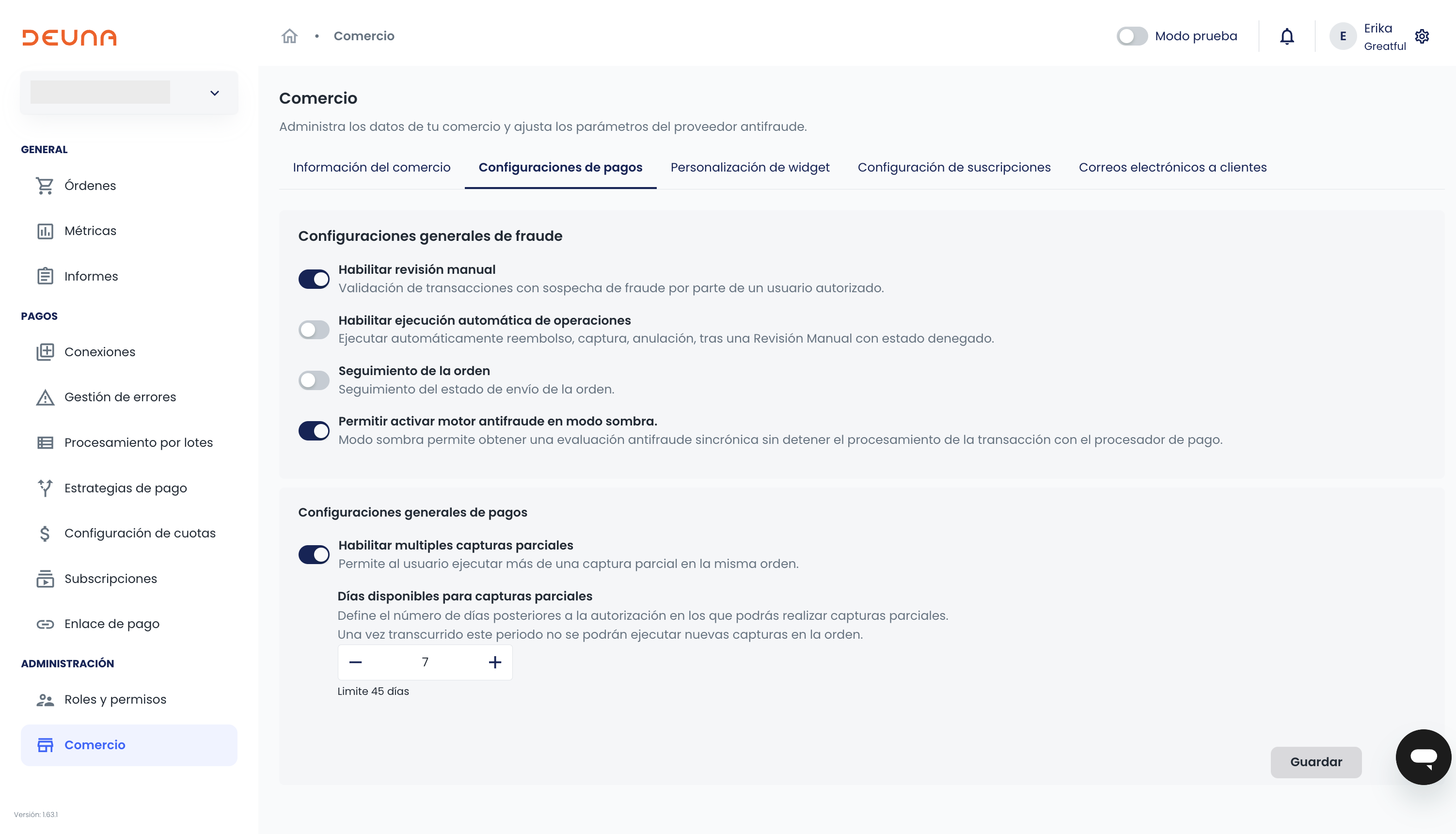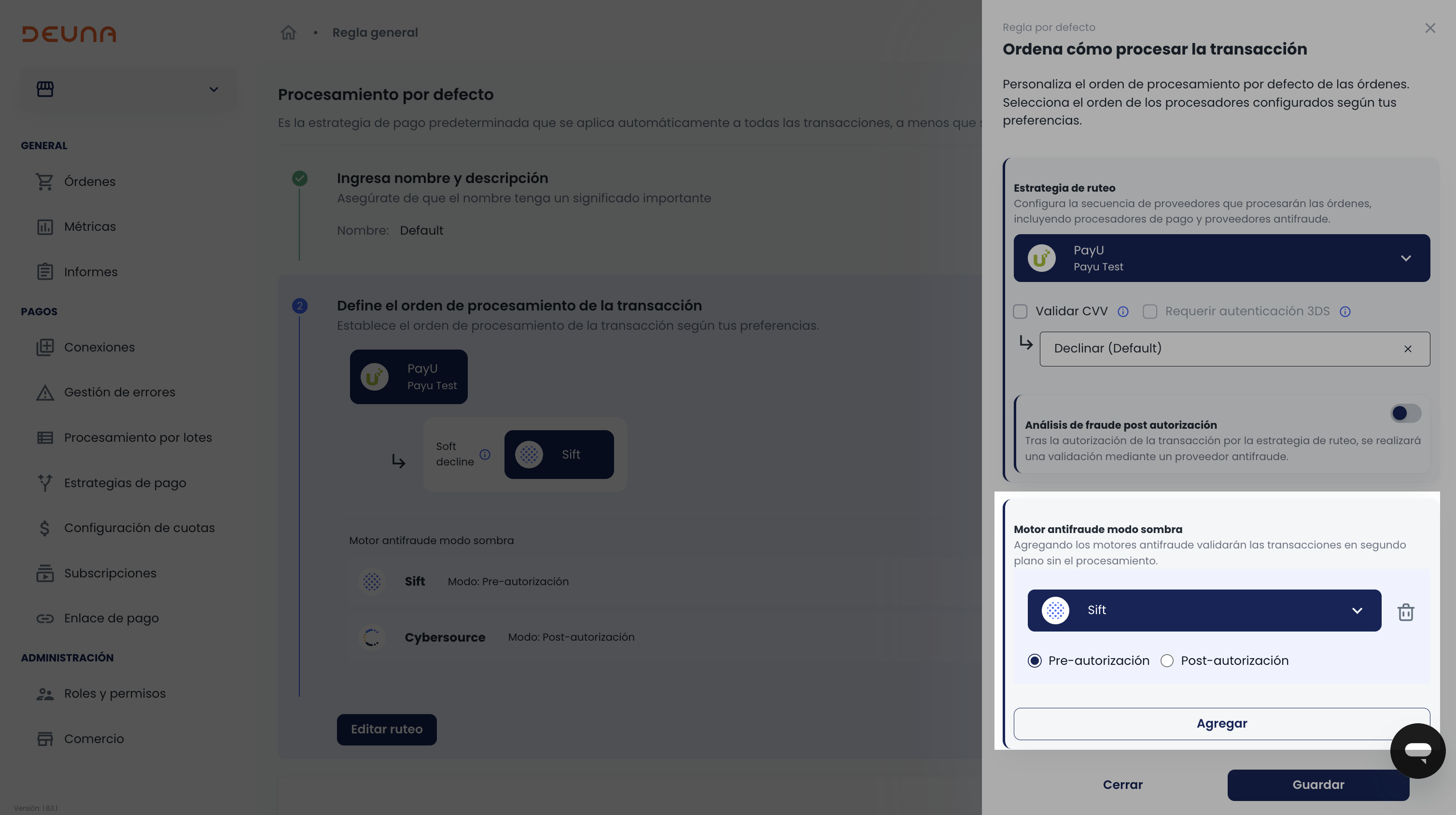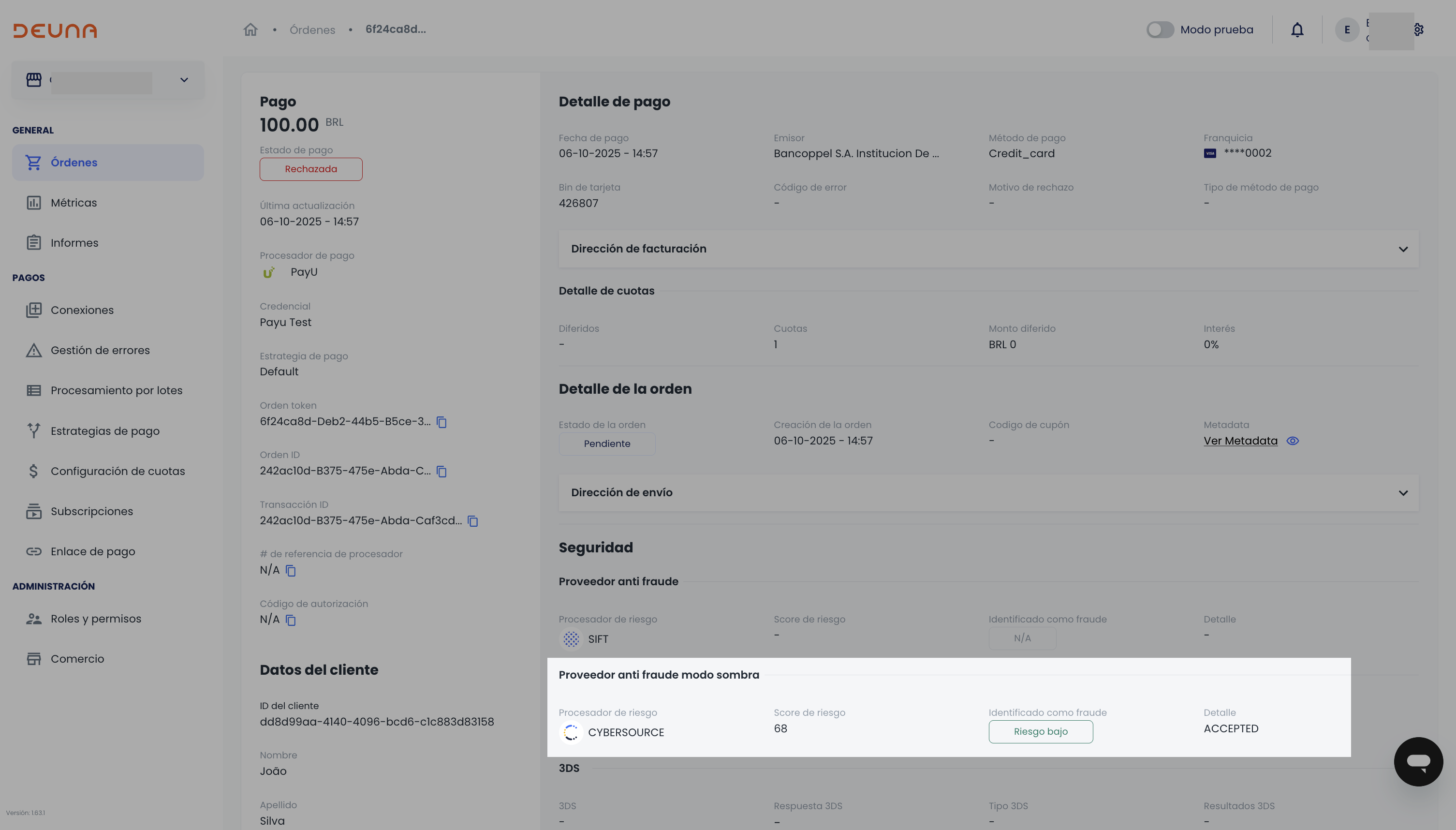Shadow mode
Shadow Mode allows merchants to evaluate one or more anti-fraud providers in parallel without interrupting the transaction flow.
This is especially useful to compare fraud detection performance or calibrate models using real-time data — without impacting live approvals or customer experience.
How it works?
When Shadow Mode is enabled, DEUNA processes each transaction through both your main anti-fraud provider and the shadow provider.
The shadow provider runs in parallel and receives the same transaction data as the main provider. However, its evaluation does not affect the purchase decision or the payment flow — it’s executed only for comparison and monitoring purposes.
Once the transaction is completed, DEUNA includes the evaluation result from the shadow provider in the API response. The result is returned in the fraud_shadowmode object, which mirrors the structure of the main fraud response.
You can access the shadow mode result in the following ways:
- GET /order — the shadow provider’s response is included in the
fraud_shadowmodefield. - Purchase API response — also contains the same
fraud_shadowmodeobject.
Shadow mode results are not included in webhook payloads.
This allows you to safely compare results from both providers, identify discrepancies in risk assessment, and make data-driven decisions before switching providers or updating your fraud strategy.
Configuration
To enable Shadow Mode, you must define a shadow provider within your fraud strategy configuration. The shadow provider receives the same transaction request as the main one, but its evaluation runs silently and never blocks or approves a payment.
If your selected provider requires a device fingerprint, DEUNA automatically reuses the fingerprint value sent in the main API call. Only one fingerprint is supported per transaction, and the same value is shared between the main and shadow providers.
This ensures consistent data across evaluations, avoiding mismatched scoring due to different fingerprints.
1. Enable Shadow mode
The first step to configure Shadow Mode in your payment strategies is enable it at the merchant level.

- Go to the Commerce section in the DEUNA Administrator Portal.
- Open the Payment Settings tab.
- In the Fraud Settings section, enable the toggle:
Enable anti-fraud provider in shadow mode Shadow mode allows a synchronous fraud evaluation without stopping the transaction from being processed by the payment processor.
Once this setting is enabled, Shadow Mode can be configured within your payment strategies.
2. Configure Shadow mode
Configure Shadow Mode for a payment strategy by selecting one or more anti-fraud providers to run in shadow mode.

- Go to the Payment Strategies section.
- Create a new strategy or edit an existing one.
- Navigate to the Fraud Settings section.
- Find the Shadow Mode area and choose the providers you wish to test.
You can assign different providers for:
- Pre-authorization flow
- Post-authorization flow
Multiple providers can be configured per flow.
3. View Shadow mode results
Once Shadow Mode is active and a transaction is processed, you can view results in the order details:
- Navigate to the Order Details page.
- Scroll down to the Security section.
- A subsection called “Anti-fraud provider (Shadow Mode)” will appear.
- For each shadow provider, you'll see:
- Provider name
- Risk score
- Risk level (e.g., low, medium, high)
- Processor response and any relevant details

The shadow mode results can also be reviewed from the Transaction Visibility section in the Order details page.
You’ll be able to inspect the request and response sent to the shadow provider, allowing you to compare it with the main provider’s behavior.
Notes / Limitations
- A provider cannot be configured as both the main and shadow provider within the same fraud strategy.
- Shadow Mode runs in parallel and does not affect payment decisions or transaction latency under normal conditions.
- If the shadow provider fails to respond, it will not interrupt the main provider’s evaluation.
Additionally, transactions processed in Shadow Mode are fully visible in the Transaction Visibility section of the dashboard. You can inspect both the request and response sent to the shadow provider to understand how its evaluation differs from your main provider’s output.
Updated about 1 month ago